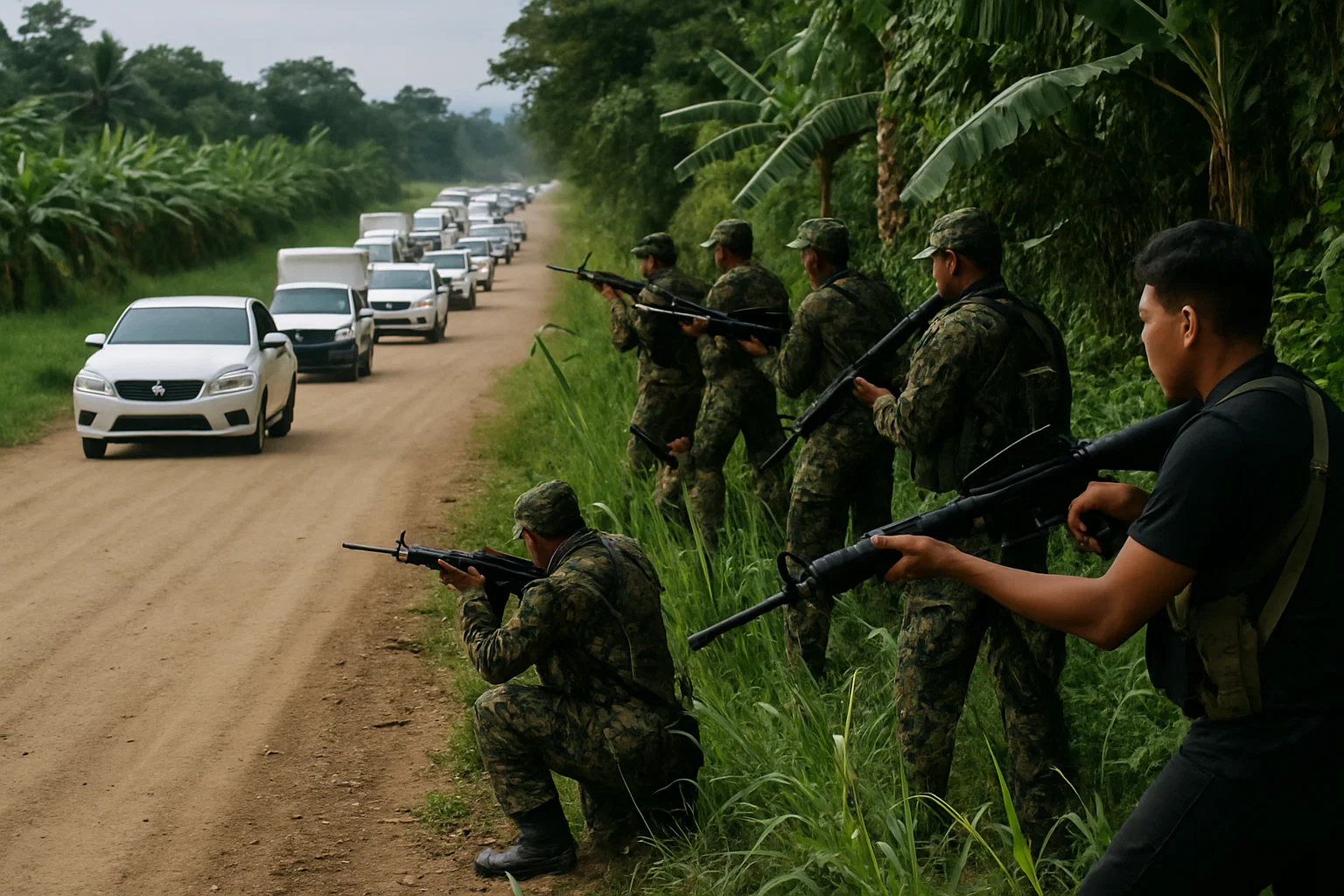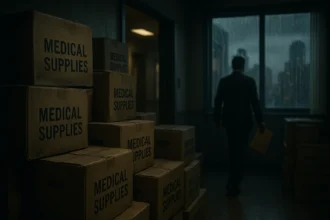On November 23, 2009, a convoy of vehicles carrying journalists, lawyers, and relatives of a political candidate was stopped on a dusty road in Ampatuan town, Maguindanao. Moments later, gunmen opened fire, killing 58 people, including 32 media workers. It was the deadliest single attack on journalists in history and the most brutal election-related violence the Philippines had ever witnessed.
- 📜 The Ampatuan Political Dynasty
- ⚠ Events Leading to November 23, 2009
- 💥 The Massacre Unfolds
- 📺 The Role of Media and Journalists in the Tragedy
- 🏛 Initial Government Response
- 🗣 Witness Testimonies and the Culture of Fear
- 📅 Table 1: Timeline from Massacre to Verdict
- ⚖ The Lengthy Trial Process
- 📊 Table 2: Key Accused Individuals and Case Status
- 🚧 Barriers to Justice in the PH ⚖
- 🌏 Human Rights Implications and Global Reaction
- 📰 Impact on Press Freedom in the Philippines
- 📌 Frequently Asked Questions (FAQ)
- ✊ Call for Vigilance and Reform
More than a decade later, the Maguindanao massacre remains a haunting symbol of political impunity, press vulnerability, and the agonizingly slow pace of justice in the country.
📜 The Ampatuan Political Dynasty
For years, the Ampatuan family ruled Maguindanao with a mix of patronage and fear. Andal Ampatuan Sr., the patriarch, had built a formidable political machine, holding sway over local elections and controlling armed militias. Their influence extended to police and military units, allowing them to operate virtually above the law.
The dynasty’s close alliance with then-President Gloria Macapagal Arroyo’s administration provided them national political cover. In return, they delivered massive vote margins in Maguindanao for Arroyo’s party during elections.
Critics had long accused the Ampatuans of maintaining private armies and using intimidation to crush rivals. Yet, despite numerous allegations, they faced no serious legal consequences — until the events of November 2009 exposed the depths of their power.
⚠ Events Leading to November 23, 2009
The massacre was triggered by a political challenge. Esmael “Toto” Mangudadatu, then vice mayor of Buluan, announced his intention to run for Maguindanao governor, directly challenging the Ampatuan clan. Knowing the risks, Mangudadatu sent his wife, sisters, and female relatives to file his certificate of candidacy in Shariff Aguak, the provincial capital, believing that women and journalists would be spared from harm.
It was a calculated move — and a tragic miscalculation.
The Fatal Convoy
On the morning of November 23, a convoy of six vehicles set out for Shariff Aguak. It included:
- Mangudadatu family members
- Lawyers and supporters
- 32 journalists and media workers
They never reached their destination.
💥 The Massacre Unfolds
Gunmen linked to the Ampatuan clan intercepted the convoy on a highway in Sitio Masalay, Ampatuan town. Witnesses later testified that the victims were ordered out of their vehicles, beaten, and shot. Some were executed at close range. Several female victims were reported to have been sexually assaulted before being killed.
Bulldozers — allegedly provided by the provincial government — were used to bury the victims and vehicles in hastily dug pits. The hurried nature of the operation left bodies and evidence partially exposed, allowing authorities to discover the crime within hours.
Victims at a Glance 🕯
- Total killed: 58
- Journalists: 32 (making it the deadliest attack on media workers ever)
- Women: 21
- Lawyers: 6
- Politicians/supporters: 20+
📺 The Role of Media and Journalists in the Tragedy
The massacre shocked the world not only because of the death toll but because of the deliberate targeting of journalists. Media workers were present to document the filing of Mangudadatu’s candidacy — a symbolic act of defiance against the Ampatuan clan. Their killings sent a chilling message: even the press was not beyond the reach of political violence.
Images of the exhumed bodies and grieving families flooded television screens. International watchdogs condemned the attack, calling it an assault on press freedom and democracy itself.
🏛 Initial Government Response
The initial reaction from the Arroyo administration was cautious. Facing public outrage, President Arroyo declared a state of emergency in Maguindanao and nearby provinces. The military took control of the area, seizing weapons stockpiles allegedly belonging to the Ampatuan clan.
However, critics noted delays in arresting key suspects and questioned whether political alliances were slowing the investigation. It took days before Andal Ampatuan Jr., the prime suspect, was formally detained.
🗣 Witness Testimonies and the Culture of Fear
The case depended heavily on witnesses — many of whom were terrified to testify. Several witnesses reported receiving death threats. Some were placed under the government’s witness protection program; others refused to come forward altogether.
Tragically, at least four potential witnesses were killed before they could testify, underscoring the dangers of speaking out against powerful political figures.
📅 Table 1: Timeline from Massacre to Verdict
| Date | Event Description |
|---|---|
| Nov 23, 2009 | Massacre occurs in Ampatuan town, Maguindanao |
| Nov 26, 2009 | Andal Ampatuan Jr. surrenders |
| Dec 2009 | Martial law declared in Maguindanao |
| Jan 2010 | Multiple Ampatuans formally charged |
| 2010–2019 | Trial proceedings, numerous delays |
| Dec 19, 2019 | Guilty verdict for key suspects |
⚖ The Lengthy Trial Process
The trial of the century — as it was called — began in 2010. More than 100 people were charged, including members of the Ampatuan clan, police officers, and militia members. Legal maneuvers, witness intimidation, and the sheer number of defendants caused years of delays.
Finally, on December 19, 2019, after a decade of proceedings, a Manila court found Andal Ampatuan Jr. and several co-accused guilty of 57 counts of murder (one victim’s body was never found). They were sentenced to life imprisonment without parole. Others were acquitted due to insufficient evidence.
📊 Table 2: Key Accused Individuals and Case Status
| Name | Role in Massacre | Verdict/Status |
| Andal Ampatuan Jr. | Former Datu Unsay Mayor, gunmen leader | Guilty, life imprisonment |
| Zaldy Ampatuan | Former ARMM Governor | Guilty, life imprisonment |
| Andal Ampatuan Sr. | Clan patriarch | Died before verdict |
| Several police officers | Provided support to gunmen | Mixed verdicts |
🚧 Barriers to Justice in the PH ⚖
- Political dynasties controlling local governance
- Weak witness protection systems
- Legal delays due to overloaded courts
- Influence of money and connections on judicial processes
- Fear of retaliation against whistleblowers
🌏 Human Rights Implications and Global Reaction
The massacre became a rallying cry for human rights advocates worldwide. Organizations like Human Rights Watch and the Committee to Protect Journalists (CPJ) demanded swift justice and stronger safeguards for press freedom. The United Nations called it a stark reminder of the dangers journalists face in conflict and politically volatile regions.
Yet the slow pace of justice and the acquittal of some suspects tempered international praise for the eventual verdict.
📰 Impact on Press Freedom in the Philippines
The Maguindanao massacre forced both local and international media organizations to confront the realities of reporting in dangerous areas. Journalists now take greater precautions, and newsrooms weigh the risks more carefully before assigning coverage in politically sensitive territories.
However, the Philippines remains one of the most dangerous countries in the world for journalists, according to CPJ rankings. The culture of impunity persists, with many media killings still unresolved.
📌 Frequently Asked Questions (FAQ)
Q: Are all perpetrators behind bars?
A: No. While key members of the Ampatuan clan and their close allies were convicted, dozens of other suspects remain at large. The risk of retaliation still hangs over witnesses and victims’ families.
Q: Has press safety improved since the massacre?
A: Some safety protocols have improved, including better risk assessments and journalist safety training. However, threats and killings of media workers continue in the Philippines.
Q: What happened to the acquitted suspects?
A: Many returned to their communities, where they retain political and economic influence. This continues to worry human rights advocates and survivors.
Q: How long did the trial last?
A: The trial spanned nearly a decade, from 2010 to 2019, due to the large number of defendants and procedural delays.
Q: Was there political interference in the case?
A: Allegations of political interference were made, especially during the early years. Critics argued that the Ampatuans’ past alliance with the Arroyo administration delayed arrests and charges.
Q: How are the victims remembered today?
A: Memorials and annual commemorations are held in Maguindanao and by media organizations nationwide. The white crosses along the massacre site stand as a grim reminder.
Q: Could such an atrocity happen again?
A: Without systemic reforms to dismantle political dynasties and strengthen rule of law, experts warn that similar politically motivated violence remains possible.
✊ Call for Vigilance and Reform
The Maguindanao massacre is more than a chapter in Philippine history — it is a mirror reflecting the nation’s ongoing struggles with impunity, political dynasties, and threats to press freedom. Justice, though partially served, is incomplete while perpetrators walk free and witnesses live in fear.
As we remember the 58 lives lost, the challenge is clear: protect those who speak truth to power and ensure that never again will a convoy of journalists and citizens vanish into the shadow of political violence.




